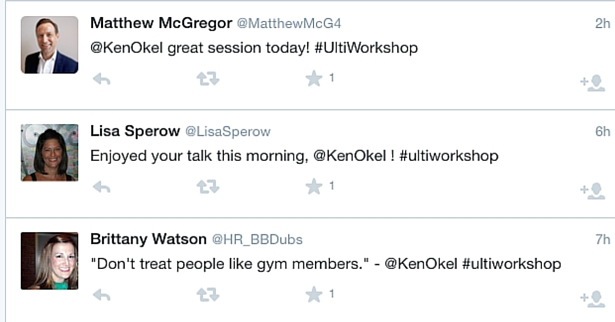 Email reply all rules can help busy organizations find more time for their top projects. It’s estimated that most people spend roughly 30% of their work day on email. A good number of those messages are part of the reply all problem.
Email reply all rules can help busy organizations find more time for their top projects. It’s estimated that most people spend roughly 30% of their work day on email. A good number of those messages are part of the reply all problem.
It sees an internal email sent to a group of people, often by a leader in the organization. While the message does not require a response, many feel they have to say something, in order to show they’ve received and read it.
Soon, everyone feels like not responding would make them look bad. The responses spread like a virus and one message in your inbox can become 30.
Most of the replies are just a few words but you still have to waste time to read them because sometimes mixed in is an important comment or question on a related subject.
I’ve talked about this problem before in this video:
The clip has recently seen a surge in popularity and this comment from Mike Sisco made me smile: “Here because of this exact phenomenon – found the link to this video in one of the reply-all’s. Cheers.”
Years ago, we had less access to email. Today, laptops, smartphones, and even watches make it very hard, in our world, to not receive a message.
There’s only so many hours in the day and working late and on weekends are not good long term strategies. Why not try to get more done, during regular working hours, by removing an activity that wastes time?
I suggest creating email rules for your organization and especially when it comes to the reply all function. In most businesses, more time is spent discussing employee kitchen rules than the use of this important communications tool.
Not sure how to start? Consider these tips:
- Create a code for messages that don’t require a reply. NRN or no reply needed is a good start
- Agree to limit messages to one topic. If you’re having a discussion about selecting a conference speaker, you won’t start talking about the catering. That discussion can happen in a separate email and be targeted to the appropriate people. This eliminates a lot of confusion.
- Determine if email is the right tool. For non-essential notifications, a sign in a common area may work better.
- Add use of email to your new employee training. You don’t want to come up with the perfect policy, only to see it undermined by turnover.
Simply by coming up with some email reply all rules, you can improve employee productivity and lower frustration.






